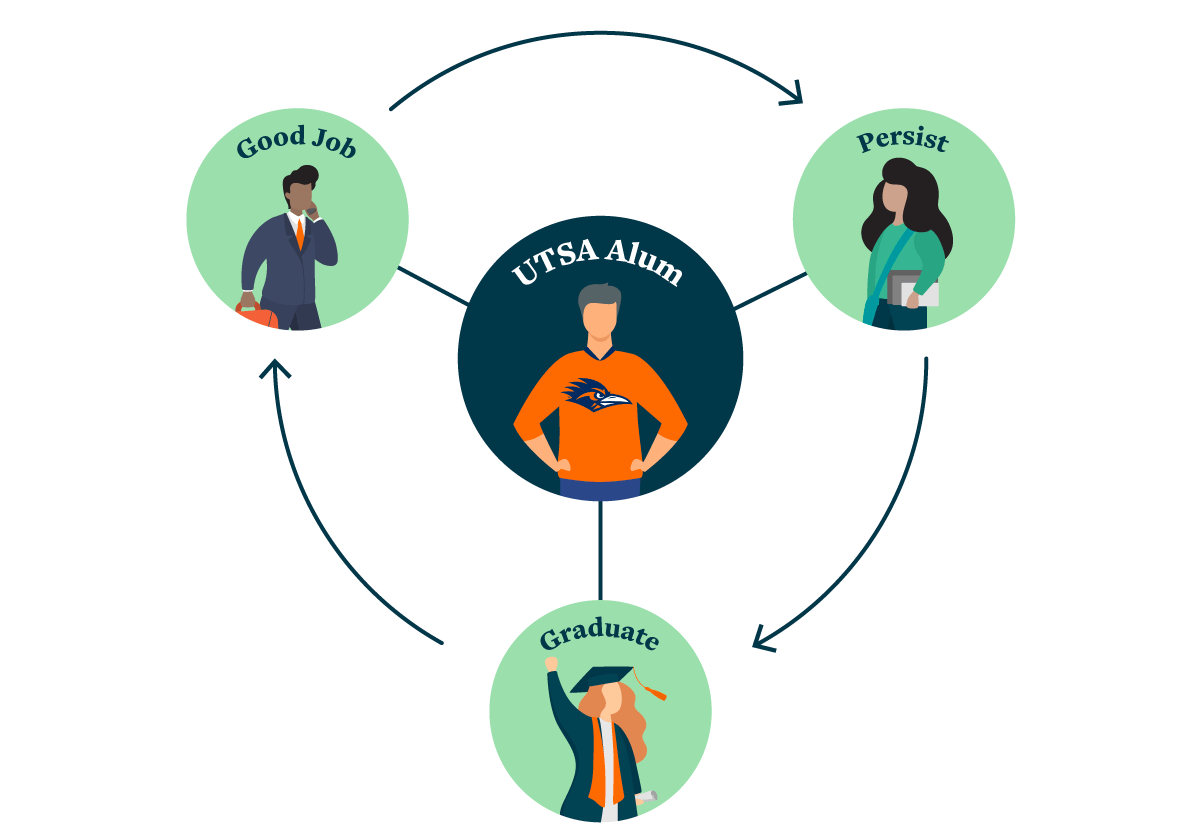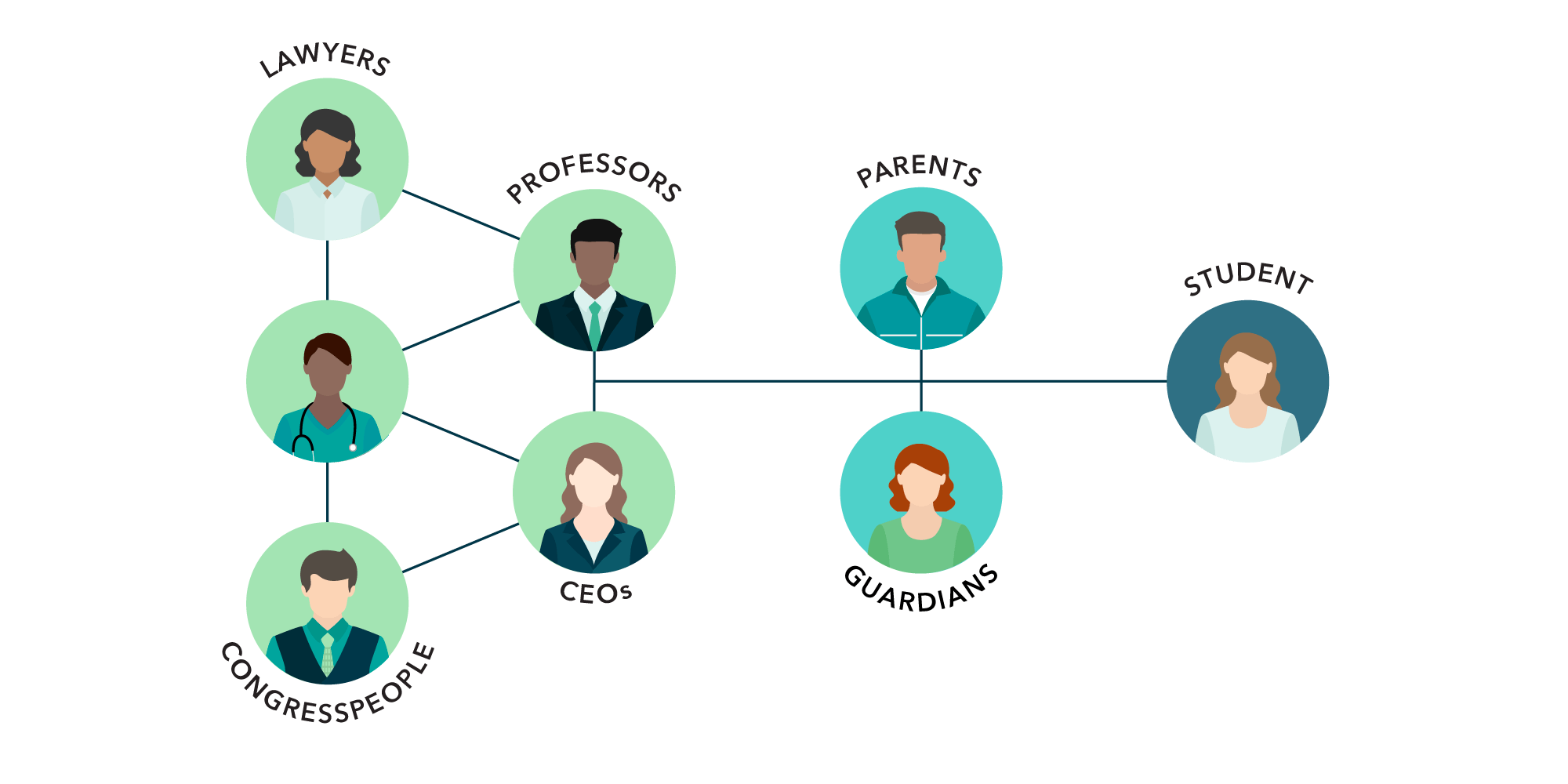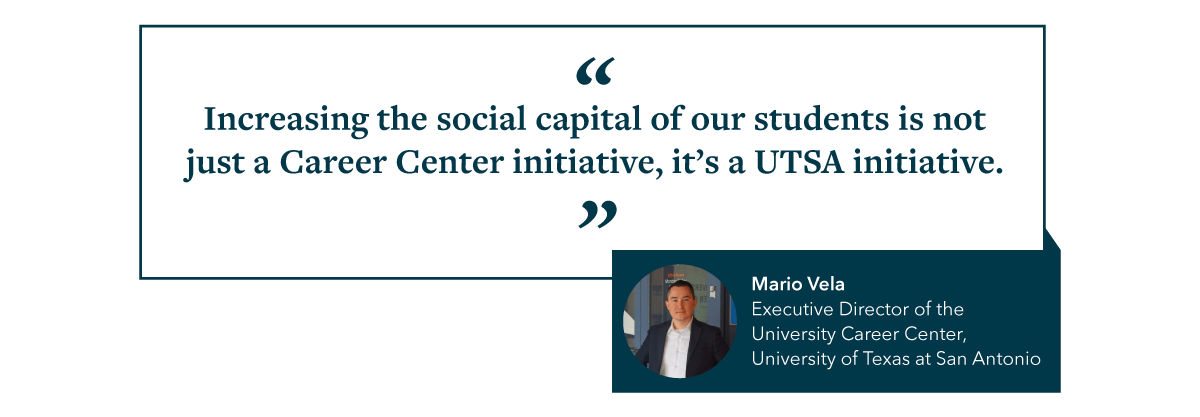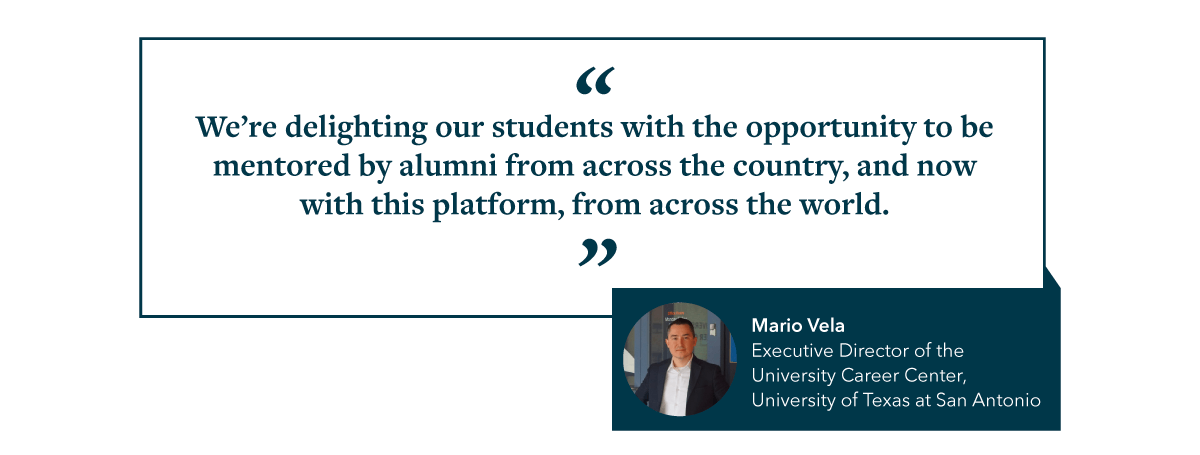Admin Users
The Community Behind the New First-Gen Student Journey
How a Partnership with PeopleGrove is Helping UTSA Build A New Ecosystem for First-Gen Students and the Entire Community Like […]
Admin Users
How a Partnership with PeopleGrove is Helping UTSA Build A New Ecosystem for First-Gen Students and the Entire Community Like […]

Like most educators, Mario Vela and Paul Rodriguez couldn’t stop talking about their students. Even though it was after work hours and the two had left campus for the day, their conversation inevitably ended up back with the students they work with at The University of Texas at San Antonio (UTSA).
Paul was the first UTSA doctoral student in the Department of Educational Leadership and Policy Studies to graduate from the higher education concentration. He had stayed at his alma mater as a lecturer and director of UTSA’s Title V grants, PIVOT for Academic Success. Paul’s focus was on helping first-generation students from traditionally underserved communities successfully graduate.
Mario is also an alumnus of the institution and was in his first full year as Executive Director of the University Career Center. With Classroom to Career as a crucial academic initiative in the UTSA Strategic Plan, Mario’s work focused on improving the career prospects for UTSA students — the backbone of which was creating an integrated framework leading to a “deepening student learning experiences and career success.”
As Paul and Mario chatted about their respective work, they continually came back to one idea — alumni. How could the alumni of UTSA support student success, ensure that students graduate, and help them get a job after college?
This conceptual idea created a new foundational community for UTSA students. This community would be focused on improving students’ social capital and providing access to immersive learning experiences that studies show students need to feel confident in their success. Through a deep understanding of their students, strategic partnerships across campus, and engagement with PeopleGrove, UTSA’s Roadrunner Network is building new pillars in the educational experience for students who need it the most.
UTSA is a Hispanic Serving University that prides itself on the diversity of its student body. 57% of the student body identifies as Hispanic or Latino. The institution has been recognized as a premier Hispanic-serving institution and one of the top universities in Texas for graduating Hispanic students. Additionally, roughly half of the students at UTSA will also be the first in their family to earn a bachelor’s degree. All in all, 64% of students represent underrepresented groups.
“These students are trailblazers,” said Paul, “if you’re the first in your family to get a bachelor’s degree then you’re leading your family and you’re inevitably going to lead future generations of your family. You’ll even end up leading other people within your community.”

In serving students from these backgrounds Paul, Mario and their colleagues recognize some of the unique challenges these students face — especially when it comes to social capital. As Julia Freeland Fisher shared in a recent Innovators Talk, presented by PeopleGrove, students arrive on campus with an “inherited network, meaning that their parents or guardians themselves possessed a professional network and students inherit access to those networks.”
As you might expect, the education level of the parent or guardian corresponds to the size of that inherited network — particularly in the knowledge economy. “Parents with a bachelor’s degree or more are twice as likely to know lawyers, professors, CEOs, Congresspeople…” Julia said. Given how important social capital is to a student’s path of study and eventual career, it is crucial that first-generation students have immediate access to resources to help them catch up to the level of their peers.

Mario and the team at UTSA understood this challenge, and given the number of first-generation students they serve, felt a sense of urgency in providing that access to social capital. “We thought about how we could elevate the conversation with our students,” Mario said, “and give them knowledge from alumni that themselves were first generation students.” In essence, how could those who blazed the trail for their own families be the guides for a new generation of trailblazers?
“We have three goals for these students,” Mario said. “It’s persistence, it’s graduation, and it’s a great job after you graduate.”
As the model began to take shape, the UTSA team evaluated how they could not only provide that immediate access for first-gen students, but also scale their efforts across the entire student body. That required forming partnerships with units and offices across campus — a task that (whether accurate or not) has a reputation of being a challenge in higher education.

Using career outcomes as a framework, Mario and the team began meeting with deans, department chairs, faculty and others across UTSA. As Mario described in a recent Innovators Talk, “I would ask them ‘how many of you are having conversations about careers with students?’ Overwhelmingly, 90% of them would raise their hand.” For the team, this was a good way to demonstrate that the work for career preparation doesn’t just happen in the physical space of the Career Center and isn’t just the responsibility of Career Center staff.
This approach has helped the team build a coalition of academic units, support centers, student organizations, and more invested in solving the identified problem. “Increasing the social capital of our students is not just a Career Center initiative,” Mario said, “it’s a UTSA initiative.”
. @UTSACareer gave our Academic Affairs leadership a demo of Roadrunner Network this week. Exciting, powerful platform for networking/mentoring in the digital age! https://t.co/yJtGCZD3aP
— Kimberly Andrews Espy, Ph.D. (@PresidentEspy) September 3, 2020
Mario, Paul and the team at UTSA partnered with PeopleGrove to build and launch the Roadrunner Network to their community this summer. An expansive platform reaching Roadrunners around the world, the technology is the result of a collaboration between the Career Center, the First-Generation and Transfer Student Center, the Alumni Relations team, the College of Engineering, and the team continues to add more partners as they present the work to wider audiences.
This network gives students the opportunity to connect with alumni and other knowledge-sharers in the community based on shared interests or experience. Through the platform’s automated tools, students are also coached through the process of reaching out to a community member for guidance, an important feature for those — like first-generation students — who may not be familiar with the best way to network.
The Roadrunner Network is also giving the team the chance to scale its work, especially for the Career Center. “We’re a community of 33,000 students so our office cannot see every student,” Mario said. With this network, the Career team can point to the knowledge-sharers available on the tool who can provide the advice and guidance students are seeking.

One exciting thing that Mario and the team have seen in the short time that the platform has been available is where in the world their alumni are located. Many UTSA graduates tend to stay in the San Antonio area. However, as the platform launched, alumni living across the globe signed up to be resources for current students. “When I’m demoing to students,” Mario shared, “students say ‘I didn’t think of alumni in Seoul, South Korea that I could network with, that I could build a relationship with.” These students are seeing just how much is possible with a UTSA degree through their interactions with these alumni.
Even in the short time that the Roadrunner Network has been available, the UTSA team is constantly innovating to help students and alumni.
UTSA has recently joined the BridgesAlliance, a consortium of 80+ institutions using PeopleGrove’s no-cost Bridges product. This tool allows community members to offer students short-term professional projects, increasing the availability of real-world work experience for their students that helps them bring what they learn in the classroom into practice. Bridges also pairs those projects with mentoring opportunities and guided pathways that help the students ensure they get the most out of their project.
For first-generation students, this opens doors for them that they may not have even known about. “These projects will allow a first-generation student, who may not have had the ability to move to New York for 4 weeks to work for a firm, gain that experience in the virtual space.” said Anthony Riojas, Marketing Associate for the University Career Center. Whether due to distance, cost, or time “these are opportunities that may have never been open to them, or that they may never have even heard of.”
These projects even allow students to simply see what the working world is really like. “I remember being a student and a lot of the assumptions I had about the professional world weren’t correct,” Mario shared. Just that basic experience can make a huge difference in the direction of a student and their career aspirations.

With a strategy in mind, collaboration across their organization, and the right technology partner, UTSA has built a strong foundation for the new student journey that scales and serves the needs of the entire community. Even in challenging circumstances, UTSA has created an ecosystem where the magic of the student experience is still “relationship-rich” and “work-integrated.” And for the trailblazing, first-generation students who make up this diverse community, these pillars of education will ensure students persist, graduate, and they feel confident in their ability to be successful in the workforce.
To learn more about how UTSA and others are building these pillars, visit us at peoplegrove.com.